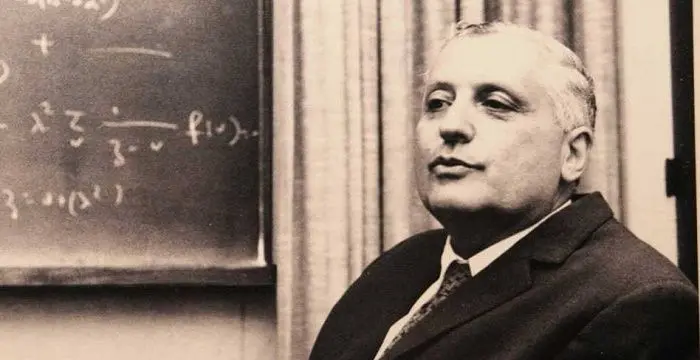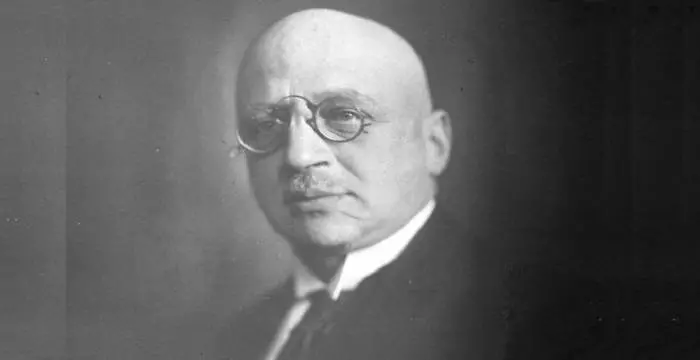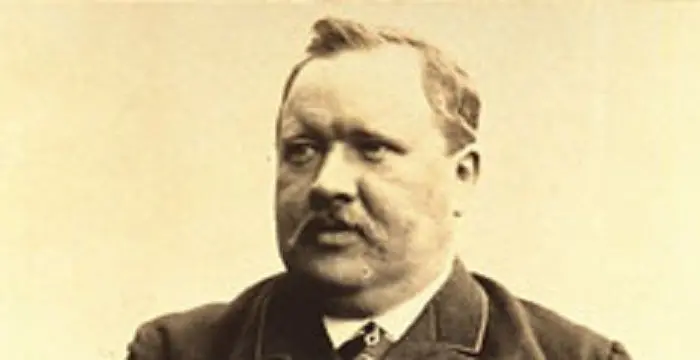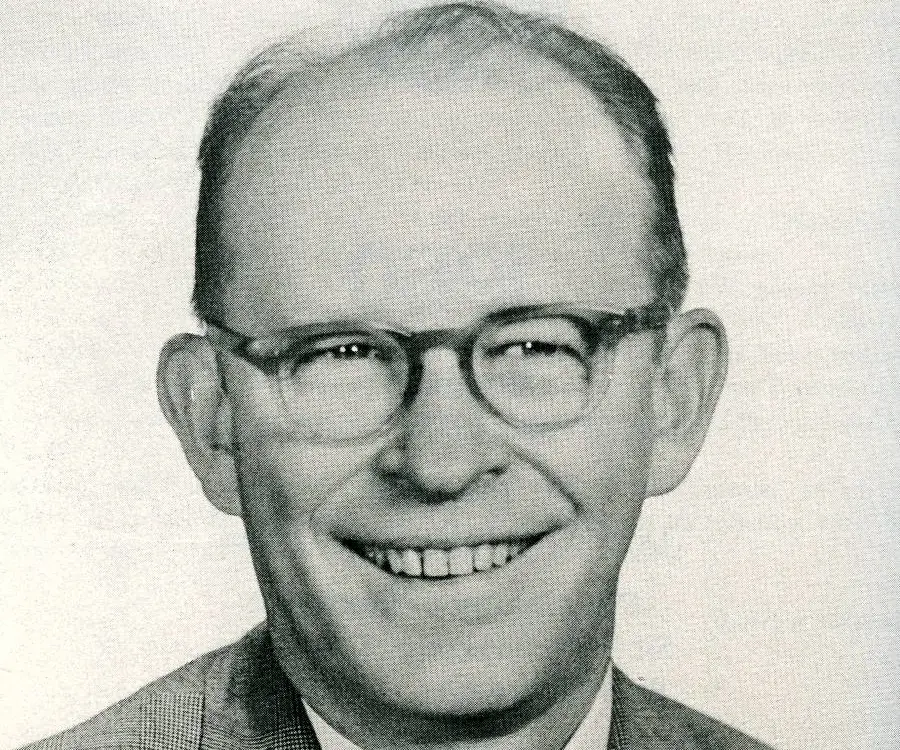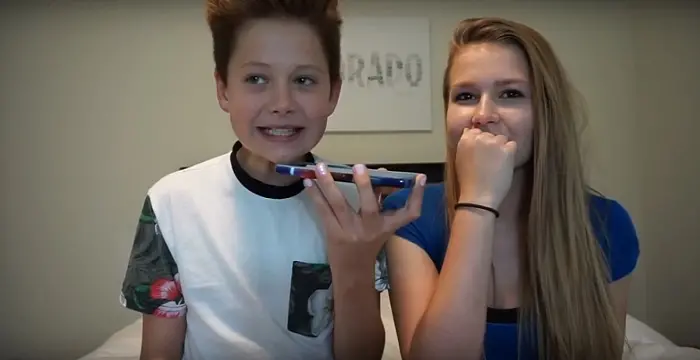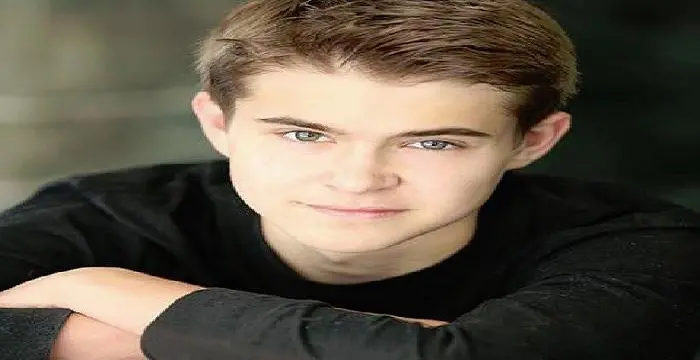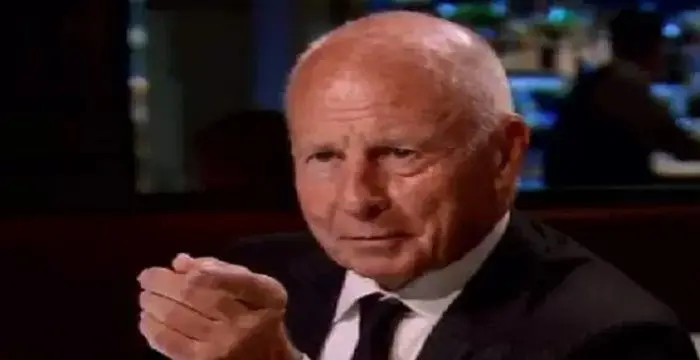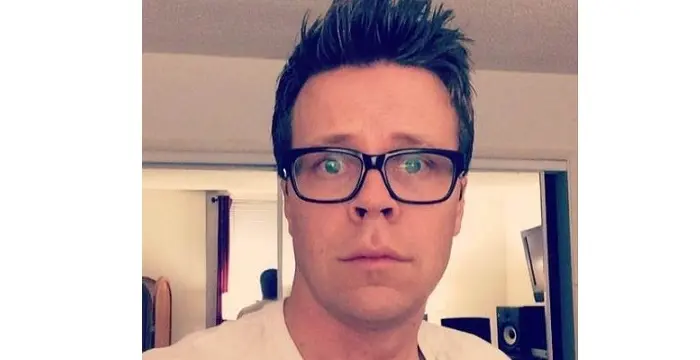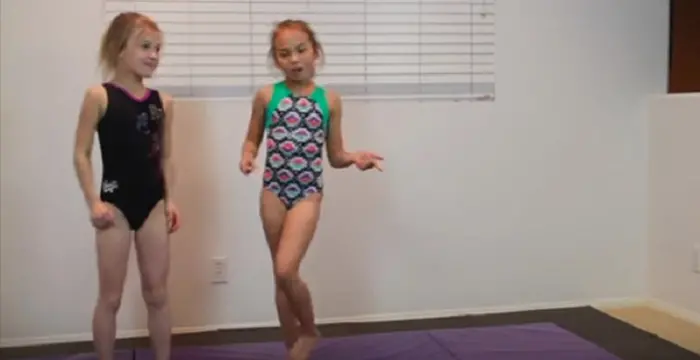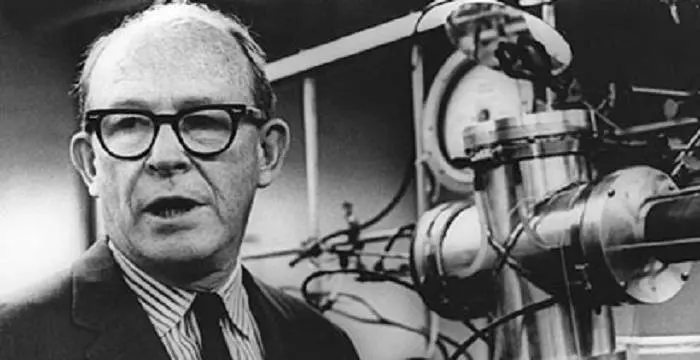
Willard Libby - Chemists, Career and Facts
Willard Libby's Personal Details
Willard Frank Libby was an American physical chemist who was awarded the ‘Nobel Prize’ in Chemistry in 1960
| Information | Detail |
|---|---|
| Birthday | December 17, 1908 |
| Died on | September 8, 1980 |
| Nationality | American |
| Famous | Scientists, Chemists, Physical Chemists |
| City/State | Colorado |
| Spouses | Leona Woods Marshall, Leonor Hickey |
| Known as | Willard Frank Libby |
| Childrens | Janet Eva, Susan Charlotte |
| Birth Place | Grand Valley, Colorado |
| Gender | Male |
| Father | Ora Edward Libby |
| Mother | Eva May |
| Sun Sign | Sagittarius |
| Born in | Grand Valley, Colorado |
| Famous as | Physical Chemist |
| Died at Age | 71 |
// Famous Physical Chemists
Ilya Prigogine
Ilya Prigogine was a Russian-born Belgian physical chemist who was awarded the Nobel Prize for Chemistry in 1977. This biography of Ilya Prigogine provides detailed information about his childhood, life, achievements, works & timeline.
Fritz Haber
Fritz Haber was a German chemist who won the 1918 Nobel Prize in Chemistry for the synthesis of ammonia from its elements. Check out this biography to know about his childhood, life, achievements, works & timeline.
Svante Arrhenius
Svante Arrhenius was a renowned Swedish scientist who is regarded as father of modern day physical chemistry. To know more about his childhood, profile, career and timeline read on
Willard Libby's photo
Who is Willard Libby?
Willard Frank Libby was an American physical chemist who was awarded the ‘Nobel Prize’ in Chemistry in 1960 for developing the technique of radiocarbon dating or carbon-14 dating, a process that proved to be extremely beneficial in the field of palaeontology and archaeology. He is also noted for developing another radioactive dating procedure using a radioactive isotope of hydrogen called tritium for dating substances like water and wine. Libby examined radioactive elements and thereby developed sensitive Geiger counter, an instrument that measures weak natural and artificial radioactivity. At the time of the ‘Second World War’ he contributed in developing the procedure of gaseous diffusion for uranium enrichment while working for the ‘Manhattan Project' at the ‘Columbia University’. He served as a Professor at the ‘Institute for Nuclear Studies’ of the ‘University of Chicago’ and later as Professor of Chemistry at ‘University of California’. He was a member of ‘General Advisory Committee’ of ‘Atomic Energy Commission’ and later inducted as Atomic Energy Commissioner. He became Director of the ‘Institute of Geophysics and Planetary Physics’ at the ‘University of California’. He took part in the ‘Atoms for Peace’ program, supported the administration for atmospheric nuclear testing and advocated measures to combat the anticipated nuclear threat of the Soviet Union.
// Famous Scientists
Juliane Koepcke
Juliane Koepcke is a German-Peruvian biologist, who was the lone survivor among the 92 passengers and crew of the ill-fated LANSA Flight 508 that crashed in the Peruvian rainforest on 24 December 1971. Know more about her life in this biography.
Henry Cavendish
Henry Cavendish was a theoretical chemist and physicist, renowned for discovery of hydrogen and calculation of the mass of earth. To know more about his childhood, profile, timeline and career read on
Konstantin Tsiolkovsky
Konstantin Tsiolkovsky was a Russian rocket scientist and a pioneer of astronautics. This biography provides detailed information about his childhood, family, personal life, career, achievements, etc.
Childhood & Early Life
He was born on December 17, 1908, in Grand Valley, Colorado to Ora Edward Libby and Eva May (née Rivers) as one of their three sons among five children. His parents were farmers.
His preliminary education began in a two roomed schoolhouse in Colorado. At five he relocated with his parents to Santa Rosa in California, where he was enrolled at the ‘Analy High School’ in Sebastopol, Sonoma County, California. He was a member of the school football team. In 1926 he completed his graduation from there.
He got enrolled at the ‘University of California’ at Berkeley in 1927 and obtained a B.S. in 1931. Thereafter he pursued his postgraduate doctorate studies at the university under the guidance of Wendell Mitchell Latimer. He earned Ph.D. in 1933 submitting his doctoral thesis on the "Radioactivity of ordinary elements, especially samarium and neodymium: method of detection". He found out that the chemical element samarium’s naturally enduring isotopes mainly decay by discharge of alpha particles.
Career
In 1933 he was inducted by the ‘University of California’, Berkeley as instructor in its Department of Chemistry. He received successive promotions in the next ten years, first as an Assistant Professor in 1938 and then as Associate Professor in 1945.
During the 1930s he focussed on developing the sensitive Geiger counters for measuring weak natural and artificial radioactivity.
In 1941 he joined the professional fraternity ‘Alpha Chi Sigma’ (ΑΧΣ) and also received a ‘Guggenheim Memorial Foundation Fellowship’ and was elected to work at ‘Princeton University’.
However this Fellowship was interrupted when the United States entered the ‘Second World War’ on December 8, 1941, following the Japanese attack on Pearl Harbor the day before.
He volunteered his services to Nobel Laureate Harold Urey, who arranged the former’s leave from the ‘University of California’ so that he could work on the ‘Manhattan Project’, the wartime research and development project to develop atomic bombs at the ‘Columbia University’.
For the next three years working in the ‘Substitute Alloy Materials’ (SAM) Laboratories at ‘Columbia University’, he helped in developing a procedure to separate uranium isotopes by way of gaseous diffusion, a significant step in the formation of an atomic bomb..
During 1942 Libby and his colleagues examined several barriers and media to prevent them from the compound uranium hexafluoride that is used in the uranium enrichment process. Later he carried out several tests that suggested that the ‘Norris-Adler’ barrier developed by Edward O. Norris and Edward Adler, which is made of powdered nickel’ would work.
Post war Libby joined the ‘University of Chicago’ in 1945 as Professor in the Department of Chemistry at the new ‘Institute for Nuclear Studies’ (at present the ‘Enrico Fermi Institute for Nuclear Studies’) and continued with his pre-war research on radioactivity. He served the university till 1959.
In 1946 he displayed that traces of tritium, the most abundant hydrogen isotope, are produced by the cosmic rays in the upper atmosphere and these could be applied to trace atmospheric water. He eventually developed a procedure to date well water and thereby wine.
In 1950 Gordon Dean, Chairman of the US ‘Atomic Energy Commission’ (AEC) inducted Libby into AEC’s ‘General Advisory Committee’ (GAC).
In 1952, the ‘University of Chicago’ published his book titled ‘Radiocarbon Dating’.
Following recommendation of Lewis Strauss, successor of Dean, President Dwight D. Eisenhower inducted Libby as an AEC commissioner on October 1, 1954. There he set up a laboratory at the ‘Carnegie Institute’ to carry out his research on amino acids. While holding such position he played a significant role to promote the ‘Atoms for Peace’ program of President Eisenhower.
He remained one of the delegates of the United States during the Geneva Conferences on ‘Peaceful Uses of Atomic Energy’ twice in 1955 and in 1958.
He backed physicist Edward Teller in a debate that dealt with the subject of pursuing a crash program for developing hydrogen bomb. The duo were committed to the ‘Cold War’ and strongly advocated for nuclear weapons testing.
On June 19, 1956, President Eisenhower renewed his appointment as AEC commissioner for another term of five years. However on June 30, 1959, Libby resigned from the position to join the ‘University of California’ at Los Angeles as a Professor of Chemistry, a position he served till he became professor emeritus in 1976.
He remained a member of the editorial board of ‘Proceedings of the National Academy of Sciences’ from 1960 and that of ‘Science’ from 1962.
He was member of several learned societies including being the Foreign Member of the ‘Royal Swedish Academy of Sciences’ (1960).
From January 1, 1962 till 1976 he remained Director of the ‘Institute of Geophysics and Planetary Physics’ at the ‘University of California’.
From 1963 he served as Director of the ‘Douglas Aircraft Company’.
In 1972 he initiated the first ‘Environmental Engineering’ program at the ‘University of California’, Los Angeles.
He was a member of the ‘California Air Resources Board’ and worked in improving and developing the air pollution standards of California.
Major Works
In 1949 he developed a process of radiocarbon dating or carbon-14 dating that uses the properties of radiocarbon (14C), a radioactive isotope of carbon, to help in ascertaining the age of ancient organic objects. This revolutionary process proved to be an immensely valuable device for archaeologists, anthropologists, geologists and palaeontologists and eventually became a standard tool.
Awards & Achievements
In 1960 he received the ‘Nobel Prize’ in Chemistry.
Personal Life & Legacy
He married Leonor Hickey, a physical education teacher in 1940. Their twin daughters, Susan Charlotte and Janet Eva were born in 1945.
In 1966 Libby divorced Leonor and married noted nuclear physicist Leona Woods Marshall, one of the original developers of the first nuclear reactor of the world, ‘Chicago Pile-1’. Leona was associated with the ‘RAND Corporation’ headquartered at Santa Monica, California. Libby had two stepsons from his second marriage.
On September 8, 1980, he passed away in the ‘Ronald Reagan UCLA Medical Center’ located at the campus of the ‘University of California’, Los Angeles due to a blood clot in his lung, formed out of pneumonic complications.
// Famous Chemists
Henry Cavendish
Henry Cavendish was a theoretical chemist and physicist, renowned for discovery of hydrogen and calculation of the mass of earth. To know more about his childhood, profile, timeline and career read on
Walter Kohn
Nobel Laureate Walter Kohn was an Austrian-born American theoretical chemist and physicist. Check out this biography to know about his childhood, life, achievements, works & timeline.
Jabir Ibn Hayyan
Jabir Ibn Hayyan was a medieval era polymath. Check out this biography to know about his life, works and achievements.
Willard Libby's awards
| Year | Name | Award |
|---|---|---|
Other | ||
| 0 | Nobel Prize in Chemistry (1960) | |
| 0 | Arthur L. Day Medal (1961) | |
| 0 | Elliott Cresson Medal (1957) Willard Gibbs Award (1958) | |
| 0 | Priestley Medal (1959) | |
| 0 | Albert Einstein Award (1959) | |
Willard Libby biography timelines
- // 17th Dec 1908He was born on December 17, 1908, in Grand Valley, Colorado to Ora Edward Libby and Eva May (née Rivers) as one of their three sons among five children. His parents were farmers.
- // 1926His preliminary education began in a two roomed schoolhouse in Colorado. At five he relocated with his parents to Santa Rosa in California, where he was enrolled at the ‘Analy High School’ in Sebastopol, Sonoma County, California. He was a member of the school football team. In 1926 he completed his graduation from there.
- // 1940 To 1945He married Leonor Hickey, a physical education teacher in 1940. Their twin daughters, Susan Charlotte and Janet Eva were born in 1945.
- // 1941In 1941 he joined the professional fraternity ‘Alpha Chi Sigma’ (ΑΧΣ) and also received a ‘Guggenheim Memorial Foundation Fellowship’ and was elected to work at ‘Princeton University’.
- // 8th Dec 1941However this Fellowship was interrupted when the United States entered the ‘Second World War’ on December 8, 1941, following the Japanese attack on Pearl Harbor the day before.
- // 1942During 1942 Libby and his colleagues examined several barriers and media to prevent them from the compound uranium hexafluoride that is used in the uranium enrichment process. Later he carried out several tests that suggested that the ‘Norris-Adler’ barrier developed by Edward O. Norris and Edward Adler, which is made of powdered nickel’ would work.
- // 1945 To 1959Post war Libby joined the ‘University of Chicago’ in 1945 as Professor in the Department of Chemistry at the new ‘Institute for Nuclear Studies’ (at present the ‘Enrico Fermi Institute for Nuclear Studies’) and continued with his pre-war research on radioactivity. He served the university till 1959.
- // 1946In 1946 he displayed that traces of tritium, the most abundant hydrogen isotope, are produced by the cosmic rays in the upper atmosphere and these could be applied to trace atmospheric water. He eventually developed a procedure to date well water and thereby wine.
- // 1949In 1949 he developed a process of radiocarbon dating or carbon-14 dating that uses the properties of radiocarbon (14C), a radioactive isotope of carbon, to help in ascertaining the age of ancient organic objects. This revolutionary process proved to be an immensely valuable device for archaeologists, anthropologists, geologists and palaeontologists and eventually became a standard tool.
- // 1950In 1950 Gordon Dean, Chairman of the US ‘Atomic Energy Commission’ (AEC) inducted Libby into AEC’s ‘General Advisory Committee’ (GAC).
- // 1952In 1952, the ‘University of Chicago’ published his book titled ‘Radiocarbon Dating’.
- // 1st Oct 1954Following recommendation of Lewis Strauss, successor of Dean, President Dwight D. Eisenhower inducted Libby as an AEC commissioner on October 1, 1954. There he set up a laboratory at the ‘Carnegie Institute’ to carry out his research on amino acids. While holding such position he played a significant role to promote the ‘Atoms for Peace’ program of President Eisenhower.
- // 1955 To 1958He remained one of the delegates of the United States during the Geneva Conferences on ‘Peaceful Uses of Atomic Energy’ twice in 1955 and in 1958.
- // 1960 To 1962He remained a member of the editorial board of ‘Proceedings of the National Academy of Sciences’ from 1960 and that of ‘Science’ from 1962.
- // 1960He was member of several learned societies including being the Foreign Member of the ‘Royal Swedish Academy of Sciences’ (1960).
- // 1960In 1960 he received the ‘Nobel Prize’ in Chemistry.
- // 1st Jan 1962 To 1976From January 1, 1962 till 1976 he remained Director of the ‘Institute of Geophysics and Planetary Physics’ at the ‘University of California’.
- // 1963From 1963 he served as Director of the ‘Douglas Aircraft Company’.
- // 1966In 1966 Libby divorced Leonor and married noted nuclear physicist Leona Woods Marshall, one of the original developers of the first nuclear reactor of the world, ‘Chicago Pile-1’. Leona was associated with the ‘RAND Corporation’ headquartered at Santa Monica, California. Libby had two stepsons from his second marriage.
- // 1972In 1972 he initiated the first ‘Environmental Engineering’ program at the ‘University of California’, Los Angeles.
- // 8th Sep 1980On September 8, 1980, he passed away in the ‘Ronald Reagan UCLA Medical Center’ located at the campus of the ‘University of California’, Los Angeles due to a blood clot in his lung, formed out of pneumonic complications.
// Famous Colorado peoples
Jake Warden
Jake Warden is an American YouTube star and vlogger. Let’s have a look at his family and personal life including age, date of birth, net worth, girlfriends, and fun facts.
Gus Kamp
Check out all that you wanted to know about Gus Kamp, the famous actor; his birthday, his family and personal life, his girlfriends, fun trivia facts and more.
Ross Lynch
Ross Lynch is an American actor, singer and musician, who became famous after his role in the television show ‘Austin & Ally.’ Check out this biography to know about his childhood, family life, achievements and other facts related to his life.
Thomas Girardi
Thomas Girardi is an American attorney who co-founded the law firm, Girardi & Keese. Check out this biography to know about his childhood, family life, achievements and fun facts about him.
Matt Yoakum
Matt Yoakum is a musician and YouTuber who runs the popular channel ‘Matt Slays.’ Check out this biography to know about his childhood, family life, achievements and fun facts about him.
Hunter In The Gym
All about American YouTube star, ‘Hunter in the gym’ including her age, family life, birthday, net worth, and fun facts.
Willard Libby's FAQ
What is Willard Libby birthday?
Willard Libby was born at 1908-12-17
When was Willard Libby died?
Willard Libby was died at 1980-09-08
Which age was Willard Libby died?
Willard Libby was died at age 71
Where is Willard Libby's birth place?
Willard Libby was born in Grand Valley, Colorado
What is Willard Libby nationalities?
Willard Libby's nationalities is American
Who is Willard Libby spouses?
Willard Libby's spouses is Leona Woods Marshall, Leonor Hickey
Who is Willard Libby childrens?
Willard Libby's childrens is Janet Eva, Susan Charlotte
Who is Willard Libby's father?
Willard Libby's father is Ora Edward Libby
Who is Willard Libby's mother?
Willard Libby's mother is Eva May
What is Willard Libby's sun sign?
Willard Libby is Sagittarius
How famous is Willard Libby?
Willard Libby is famouse as Physical Chemist
